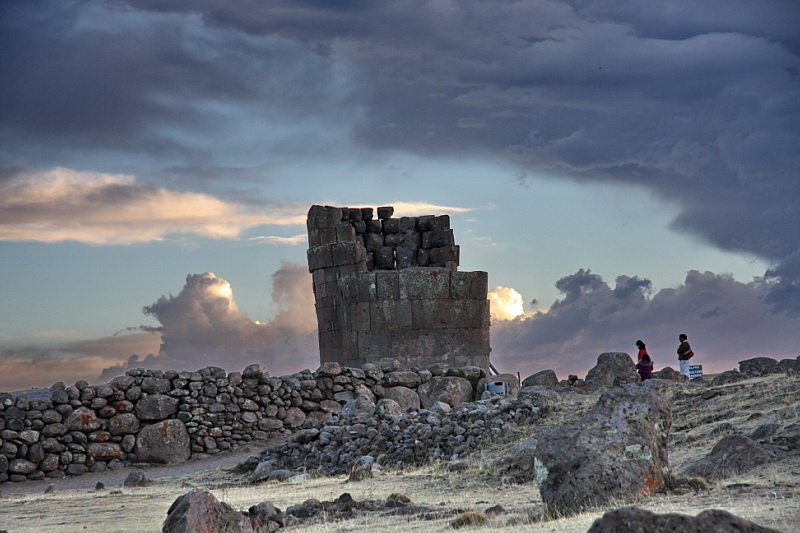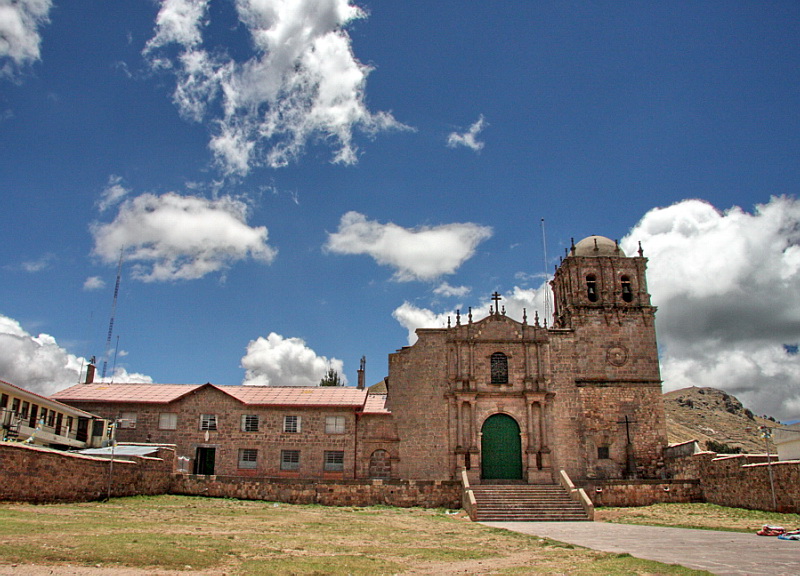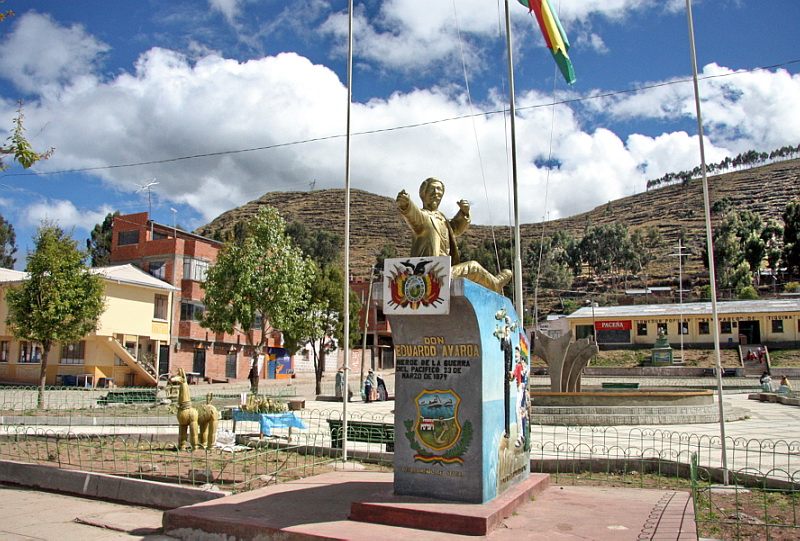Lake Titicaca Overview
Puno
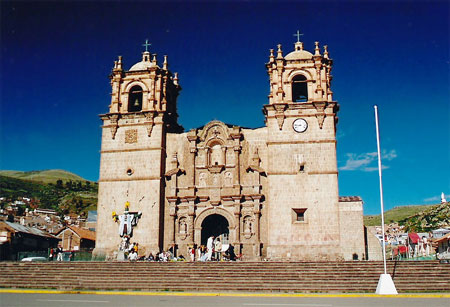
Puno is the capital of the department of Puno. It was founded with the name of "Villa Rica de San Carlos de Puno" in 1668, by the Viceroy Count of Lemos, to end with the problems of possession of the silver mines of Laicacota of the brothers Gaspar and Jose Salcedo. Lake port beside the Titicaca, the highest navigable lake in the world. It have landscapes of indescribable beauty, it has been the origin and cradle of big pre-Hispanic civilizations as Tiahuanaco, Collas and Aymaras, and of the mythical legend of Manco Capac and Mama Ocllo who emerged of its waters and went to Cuzco to found the capital of the Inca empire.
Very near the city you will find interesting archaeological remains of Pre-Hispanic cultures, as the chullpas of Sillustani inside the Ecological Reserve of Umayo, Pucara, or old cities of Spanish foundation as Chucuito, Juli and Pomata that harbor jewels of the architecture and colonial art, expressed in their temples and churches that flourished as product of the fortune of the silver mines of this region and the Spanish conquest of the Paraguay and of the Mojos.
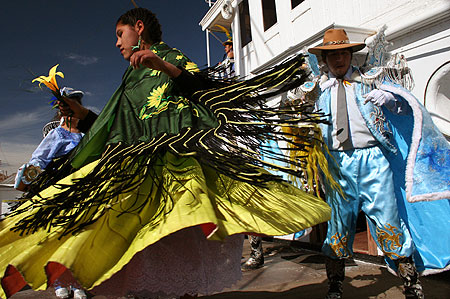
Puno has been denominated the "Capital folklorica del Peru" (folkloric capital of Peru) by the wealth of its artistic and cultural expressions. Especially through the dance; there are registered more than 300 from the 1,500 existing in the national environment, autochthonous dances that reach their biggest manifestation in the celebrations of the Feast of the "Virgen de la Candelaria" and the Regional Competition of Autochthonous Dances.
The native resident of Puno is of the ethnos Aymara (12.9% population of Peru); their language is the Aymara. For the subsistence in height average of 4,000 meters above sea level and with a cold climate, they have achieved an excellent adaptation. The color of its skin is dark, high lung capacity and development of the thorax; they have two more litters of blood then the average, with high content of red globules, what grant them great physical resistance.
Many of them are dedicated to the elaboration of beautiful crafts and fine fabrics in alpaca wool.
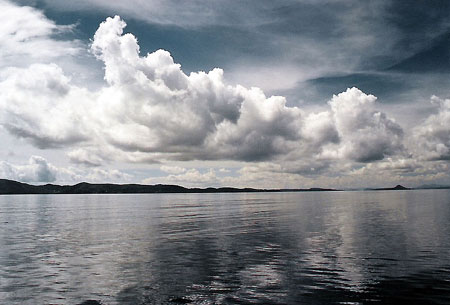
In the plains and mountains of Puno it will be common to find clusters of llamas and alpacas, being the area of more intense development of this cattle raising, originating beautiful panoramas in places where trees and vegetation almost not exist.
Lake Titicaca
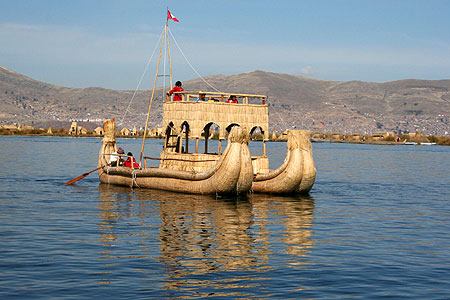
Lake Titicaca is the main attraction that draws people to this part of Peru. This amazing deep blue lake, 195 km in length with an average width of 50 km, is the largest lake in South America and the largest in the world above 2,000m.
Lake Titicaca was, according to Andean legend, the birthplace of civilization. Wiracocha, the creator god, brought light into a dark world by directing the Sun, Moon and stars to rise up out of the lake and take their place in the sky. With time the Sun and Moon had children who also rose from the depths of the lake. These new people were sent out from Titicaca to the four corners of the earth, with Manco Capac and his sister-wife Mama Ocllo and their family clan being sent off to inhabit the Cusco region. Inca legend believed that Manco was the first Inca and a direct descendent from the Sun.
The supposed location in Titicaca of the birthplace of the Sun, Moon and Manco Capac is actually on the Bolivian side of the lake on the islands not surprisingly named the Isla del Sol (Island of the Sun) and Isla de la Luna (Island of the Moon).
There are, however, several islands, that can be accessed from Puno and make for an equally interesting visit. The most popular of these are the floating islands of Uros, Taquile and Amantani island.
Uros Islands
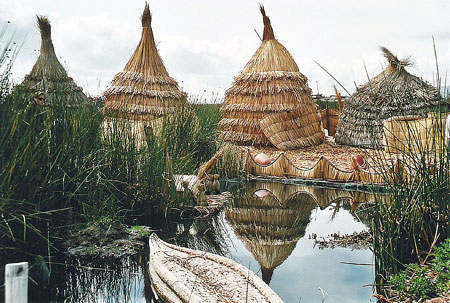
Although the Uros Indians of the floating islands have intermarried with Aymara Indians and no pure-blooded Uros exist, many of the inhabitants of the islands still practice the old traditions of fishing, trapping birds and living on the lake plants. The totora reeds which grow abundantly in the shallows of Lake Titicaca are used for their boats, houses and to build the very islands on which they live. The result is a strange springy surface which requires care when walking - it's easy to put your foot straight through! This strange way of life began over 500 years ago when the Uros built the islands in an effort to isolate themselves from the Collas and the Incas.
A visit to the islands can seem like a very commercial experience with the islanders main interest being your money. Many tourists have dubbed them the 'floating souvenir stalls' Most tours, however, only visit one or two of the largest of the thirty or so 'Puno Bay' communities. Many of the other communities still practice a more traditional lifestyle without intrusion from tourism. On the islands visited by the tour groups you will have the opportunity to buy beautiful handmade weavings and collages depicting the life on the islands. The inhabitants on some islands have built small 'museums' with stuffed birds inside, or lookout towers to get a better view. For a dollar or so you can usually take a 10 minutes ride on the lake in a traditional reed boat. All in all it makes for an interesting visit since there's nowhere else quite like it in the world.
Taquile Island
A much more interesting island to visit is Taquile, some 45 km from Puno, on which their are numerous pre-Inca and Inca ruins and Inca terracing. The island is narrow, only about 1 km wide, and 6-7 km long. There is a cooperative shop on the island that sells exceptional woollen goods which are not cheap but of very fine quality.
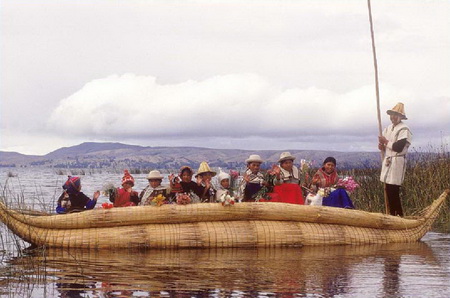
Amantani Island
Another island well worth visiting is Amantani. It is very beautiful and peaceful, and in many ways less spoiled than Taquile. There are six villages and ruins on both of the island's peaks, Pacha Tata and Pacha Mama, from which there are excellent views. There are also temples and on the shore there is a throne carved out of stone. The residents make beautiful textiles and sell them quite cheaply at the Artensania Cooperative. The people are Quechua speakers, but understand Spanish.
Sillustani Archaeological Site
In the archaeological site of Sillustani, 34 Km north from of the City of Puno, on the shore of beautiful Umayo Lagoon, one runs into enigmatic chullpas, which were built by the Collas, some of which are more than 12 m. high. Used to bury the most important personalities of this nation, the chullpas know as Lagarto and Intiwatana are the most prominent.
Juli
Juli, once the capital of the lake area, has four beautiful colonial churches under reconstruction. Although it now appears a little odd to see so many large churches so close together, at the time the Spanish ordered them built they hoped to covert huge masses of Indians to Roman Catholicism.
In addition, the Spanish were accustomed to having one church for the Europeans, one for the mixed-raced Christians and yet another for the Indians. The largest of Juli's churches is San Juan Bautista with its colonial paintings tracing the life of its patron, Saint John the Baptist.
From the courtyard of La Asuncion Church visitors have a captivating view of the lake. The other churches in the city are San Pedro, once the city's principal place of worship and the church in which a choir of 400 Indians used to sing each Sunday, and Santa Cruz, which is just beside the city's old cemetery. Santa Cruz was originally a Jesuit church upon the front of which Indian stonemasons carved a huge sun - the Inca god - along with more traditional Christian symbols.
Desaguadero
The city is located in 86 kilometers from La Paz, on the frontier with the republic of Peru.
- Bolivian legend in which the gods decide to punish a city on the edge of a lake by submerging it in a day of earthquakes and floods. The principal god, Tunapa then sinks into the waters of Lake Poopo (also called Lake Aullagas) at Pampa Aullagas.
The Desaguadero River in Peru and Bolivia is the only river draining Lake Titicaca. It exits the lake at the southern part of the river basin, it flows south and drains approximately five percent of the lake's flood waters into Lake Poopo, a smaller lake.
